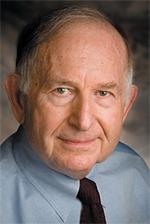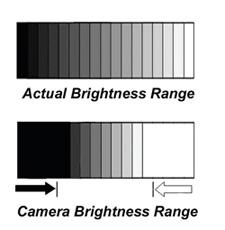Theater to Video Translation: Mr. First Nighter

A great test of a lighting man’s skill comes with a seemingly simple task: the video recording of a live theatrical stage presentation. This common task usually comes without warning, but has one redeeming benefit—the success of the translation between the two very contrary mediums will depend greatly upon your understanding of the differences between the two.
It is quite common today to record live performances, anything from a rock band to a symphony orchestra, a single stand-up comic to a multiscene drama. The recording can be done in every possible venue—from a Broadway type theater to an aircraft hanger.
THE BASIC IDEA
In most elementary terms, the successful transfer from a live performance to video (or film, for that matter) should accomplish one very important goal: The viewer of the final recorded product should have the same emotional experience as if he were viewing the event live.
Of course, this is not completely attainable; although, in terms of the lighting, the basic intent and mood can be maintained. This may take some doing, but can be very rewarding in that the alterations to the lighting still retain the integrity of the original theatrical lighting design.

Angela Lansbury and George Hearn in “Sweeney Todd”LIGHTING RANGE AND INTENSITY
The range of brightness of a theatrical production is the most immediate consideration. It is meant to be viewed by the eye. In order to establish the areas of importance to the theater viewer, the lighting designer will use very high contrast in the lighting, which is in complete opposition to what the camera desires. This is the always first problem—attaining a narrower range of brightness.
It is not uncommon to find that the principals in a musical are in a follow spot at about 500- foot candles with nothing but ambient light on the scenery. When exposed for the spotlight, the camera will not “see” the scenery at all. Not only that, but the next scene may be in fixed lighting only, no follow spots, but at 20-foot candles.
So we have added a second consideration to the mix, the variation of exposure settings for the camera. Common practice on multiple-camera television production is to basically use a fixed exposure throughout the entire production. Because of this it is necessary to inspect each theatrical lighting cue and alter it to not only maintain the narrow dynamic range the camera desires, but also to provide a consistent light level. It can get awkward if you attempt to expose for each scene where the range of light levels is extreme.
On many productions, numerous theatrical lighting adjustments made to subtly direct the viewer’s attention should be removed as the cameras will do this function more directly. What happens is that many times these subtle adjustments take place exactly on camera changes, when the change of viewpoint is desired for the same reason that the lighting change was included. This results in a not-so-subtle change in light level that, unfortunately, may look like a mistake.
COLOR OR ILLUMINATION
Standard operating practice for video as well as film camera is to maintain the illuminant that the camera sees as “white” throughout the sequence. In most theatrical presentations, this illuminant would be provided by tungsten lamps.
Usually, it is impossible to determine what the “white” or basic illuminant is in a theatrical production. It varies all over the map. Most commonly it is a low-color temperature as a result of amber-based gels placed on the stage lighting instruments, coupled with the lamp voltage dimmed to a very low reading.
The eye, of course, adapts to this illuminant and attempts to restore color (in this case blue) to retain the colors of the subjects. The camera, with no ability to adapt, must be readjusted (white balance) to reproduce the colors. Many times, under the stage lighting, it is impossible to attain white balance because the sensitivity of the camera has reached its limits in the ability to “add” the missing spectrum.
Under these conditions, bite the bullet, remove the color from the theatrical instruments or actually replace the instruments with ones with no gel. The reader should be aware that we are not necessarily referring to the use of color as a theatrical effect (fire is red), but in acquiring a realistic rendering of the color of the human face under situations where the lighting is considered normal.
THE CAMERA’S EYE
I mentioned in the beginning that a theatrical scene is usually quite contrary and, when seen by a camera, will appear even more so. In fact, the detail may disappear entirely at either end of the brightness scale—at the white end and the black.

Fig.1: Contrast Range Fig. 1 is a simple graphic representation of this phenomenon. But this exaggeration can be extended into other elements that make up our scene. For example, colors will appear more saturated. Don’t be surprised if your favorite primary blue becomes Congo. A rouge applied sparingly on the cheeks of your star may become clown-like under the camera. What looks medium gray to your eye may become white when you properly expose the actor.
As implied in the follow-spot example I used at the beginning, we will have to add instruments to light the scenery to properly balance the background to the foreground acting area.
THE REALITY
Now, here is the big issue. The reality of the situation is that you cannot satisfy both media at the same time. Either the live performance or the recorded result must take precedence. One will suffer diminished results. If our goal is to obtain “broadcast quality” (for want of a better term), great compromises will have to be made to the lighting of any event designed for a live audience.
A perfect illustration of this is that in most theater productions, a drop of light on the proscenium is considered extremely bad form and lighting designers take great care in insuring this never occurs. If we are recording the same production, we would welcome spill on the proscenium as it would immediately establish the real estate of the locale to the viewer.
Of great importance is that a properly balanced scene for the camera will appear quite “flat” to an observer in the theater. Not a very pleasing result for Mr. First Nighter. And what if we desire audience reaction shots during our performance? The rush to the box office by angry patrons demanding their money back will be a stampede!
CURTAIN TIME
But, as I stated at the start, if you have done a good job and solved all the obstacles head-on due to your understanding of the basic principles, the result will give you great satisfaction as well as a permanent record of the theatrical production—in “broadcast quality.”
Bill Klages would like to invite all the lighting people out there to give him your thoughts at billklages@roadrunner.com.
Get the TV Tech Newsletter
The professional video industry's #1 source for news, trends and product and tech information. Sign up below.
